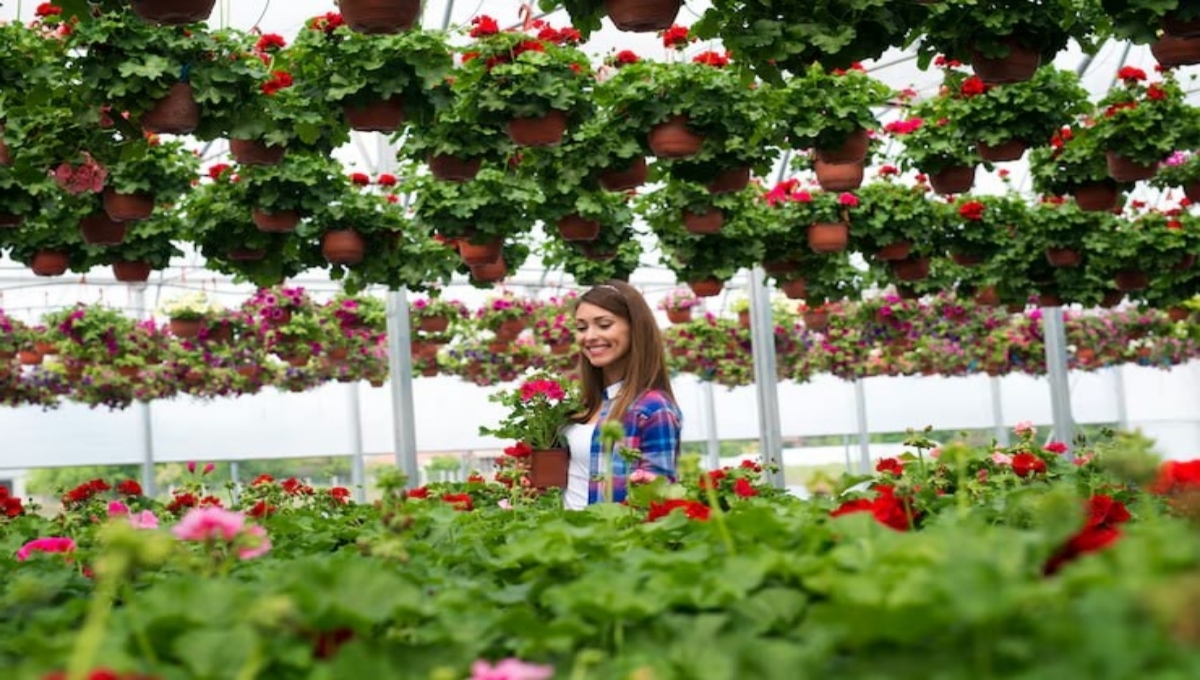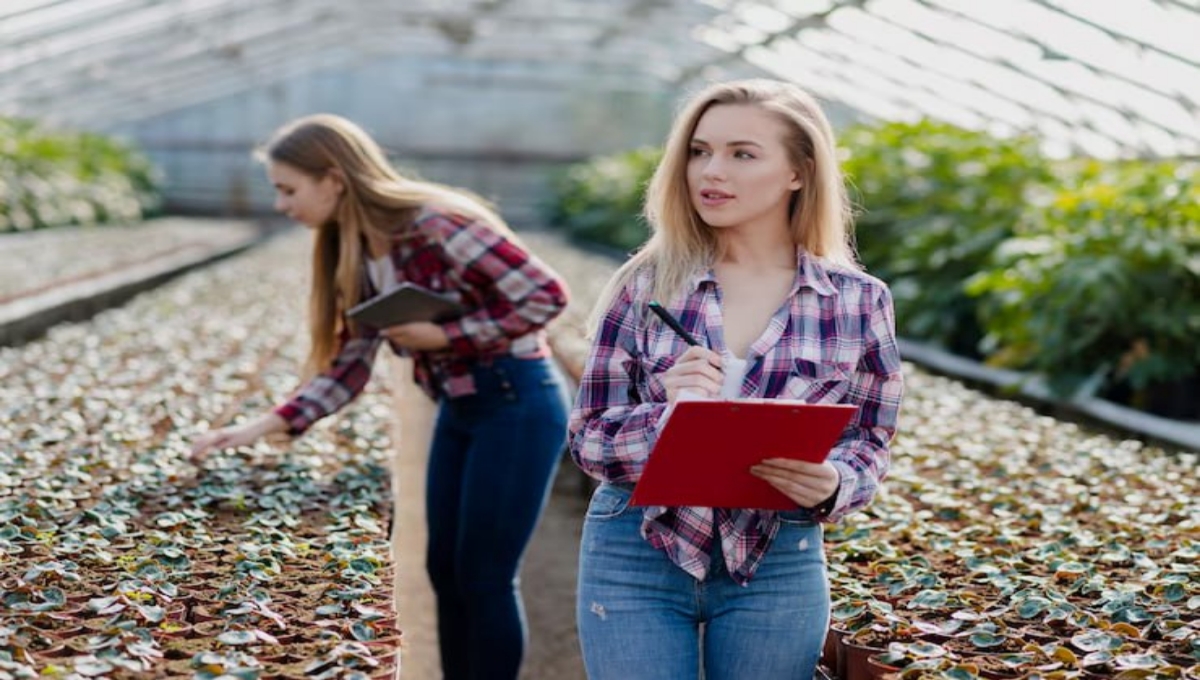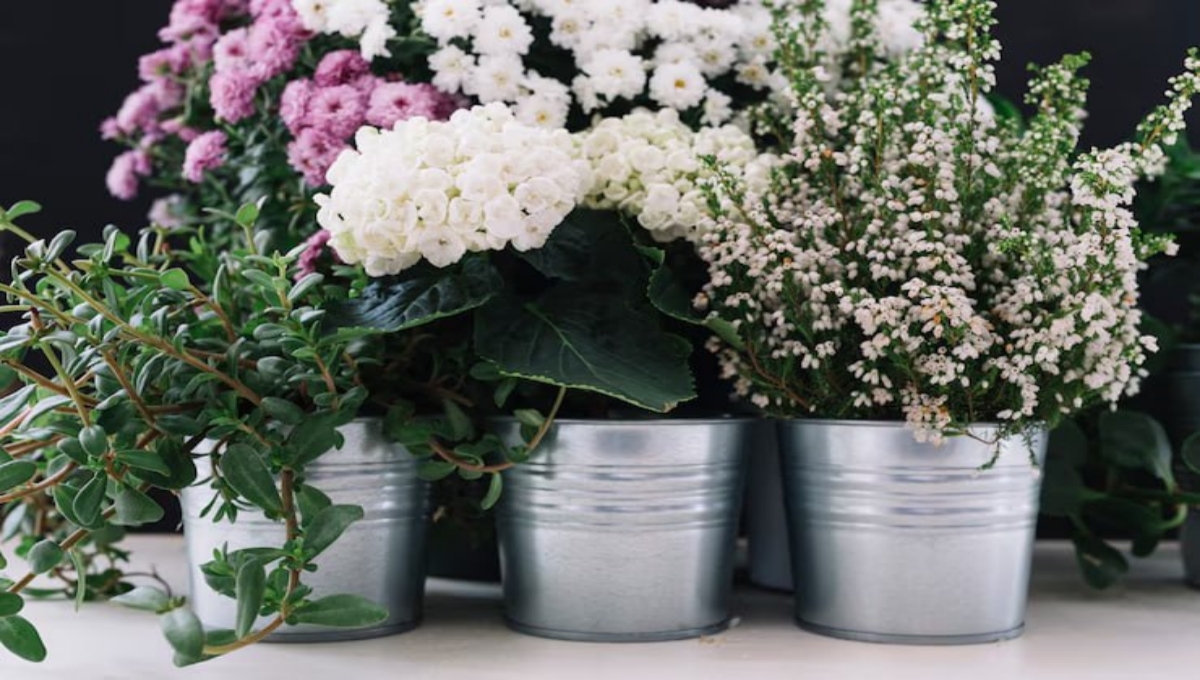To start a vegetable garden in small spaces, select sunny spots and use vertical planters. Optimize space by choosing compact, high-yield varieties.
Embarking on the journey of creating a vegetable garden within a limited space can seem daunting, but with the right approach, it’s entirely feasible and rewarding. Urban dwellers, apartment owners, or anyone with a modest footprint can harness the potential of balconies, patios, or small yards to cultivate fresh produce.
The key to success lies in efficient space utilization and strategic plant selection. Begin your gardening endeavor by identifying areas that receive ample sunlight—a crucial ingredient for most vegetable plants. Employing raised beds, containers, and trellises can maximize your growing area vertically, offering additional room for plant growth. Consider crops that naturally have a compact growth habit, such as cherry tomatoes, radishes, and lettuce, to ensure a bountiful harvest from your pint-sized garden. Embrace the simplicity of this guide, and you’ll be on your way to enjoying your freshly picked vegetables in no time.
The Allure Of Urban Gardening
The allure of urban gardening is transforming concrete jungles into edible Eden’s. City dwellers seek fresh air, greenery, and the joy of harvesting their food. Limited space poses no obstacle to the green-thumbed enthusiasts. They prove bountiful vegetable gardens can thrive on balconies, rooftops, and even windowsills. Urban gardening offers a delicious escape and connects people to the earth—right in the city’s heart.
Benefits Of Growing Your Veggies
- Freshness and Flavor: Veggies straight from the garden are crisp, succulent, and packed with flavor.
- Nutritional Value: Homegrown produce often contains more nutrients than store-bought equivalents.
- Reduced Footprint: You cut down on the carbon emissions associated with transporting food.
- Healthier Living: Gardening is a relaxing hobby that promotes physical and mental well-being.
- Cost Saving: Save money by decreasing the need to buy vegetables.
Surge Of Interest In Small Space Gardening
Gardening within small spaces is now a major trend. People are turning their balconies and patios into mini-farms. Social media buzzes with success stories and tips for maximizing yields in tiny areas. Communities are coming together to share spaces for growing fruits and veggies. The table below outlines the reasons behind this growing movement:
| Reason | Description |
|---|---|
| Space Efficiency | Vertical gardens and container planting make use of limited space. |
| Eco-Consciousness | Gardeners aim to lead sustainable lifestyles and reduce waste. |
| Social Interaction | Community gardens foster interaction and shared learning. |
| Food Security | Growing food locally ensures a stable supply of veggies. |
With practical planning, even the smallest apartment can yield an impressive variety of vegetables. Ready to dig in?
Assessing Your Space
Starting a vegetable garden in a small area begins with understanding your available space. It’s time to get creative and think outside the seed box. Whether on a tiny balcony, a sliver of a patio, or a modest spot by your window, every inch counts. Let’s unlock the green thumb potential of your cozy outdoor or indoor areas.
Finding The Right Spot
- Determine sunlight exposure. Most vegetables love 6-8 hours of direct sunlight daily.
- Check for water access. Easy reach to water sources is crucial for consistent watering.
- Observe wind patterns. Too much wind can hinder plant growth; sheltered spots are ideal.
- Avoid high-traffic areas. Plants need a calm environment; less foot traffic is better.
- Consider convenience. Your garden should be in a spot that’s easy for you to manage.
Maximizing Vertical Space
Vertical gardens are a brilliant solution for tight spaces. They take gardening to new heights—literally. By growing upwards, you make the most of every square inch. Here’s how:
| Method | Benefits |
|---|---|
| Stacked pots or planters | Makes watering easier and can create stunning visual effects. |
| Trellises or climbing frames | Supports vine crops and adds structure to the garden. |
| Wall-mounted planters | Saves floor space and can be decorative too. |
| Hanging baskets | Utilizes overhead space and is perfect for herbs and strawberries. |
Remember, each vertical element should still get plenty of sun and water. Choose the right plants for the right spot and watch your vertical garden thrive.
Choosing Your Crops Wisely
Choosing your crops wisely is a key step in starting a successful vegetable garden in small spaces. It’s all about picking the right plants that will thrive within your limited area. To ensure a bountiful harvest, think about the size and growth habits of the veggies you want to grow. This section will guide you through selecting the best varieties that make the most of your garden space and provide tips on keeping your soil healthy with crop rotation.
Best Vegetables For Tight Spaces
In a small garden, every inch counts. So, choose vegetables that are known for their compact growth or that can be easily trained to grow vertically. Here’s a list of plants perfect for tight spots:
- Cherry Tomatoes – Grow up, not out, and are full of flavor.
- Radishes – Quick to harvest, they require very little space.
- Leaf Lettuce – Harvest leaves as needed, and plants keep growing.
- Herbs – Like basil and thyme, many herbs have a small footprint.
- Carrots – Root crops that grow well in deep containers.
- Spinach – Grows quickly and can be cut repeatedly.
- Peppers – Small but fruitful, ideal for pots.
Considering Crop Rotation
Even in small gardens, crop rotation plays an important role in maintaining soil health. It helps prevent soil-borne diseases and pest infestations. Here’s a simple rotation plan for small-space gardens:
- Divide your space into sections.
- Plant different vegetable families in each section every year.
- Keep track of what you plant where.
On a small scale, consider rotating leafy greens with root vegetables and then with fruiting plants. This simple pattern can greatly benefit your soil structure and the overall health of your garden.
Containers And Planters
Think tiny spaces mean you can’t grow your veggies? Think again! With the right containers and planters, even the smallest balcony or windowsill can transform into a mini vegetable oasis. Let’s dig into how to select and set up the perfect home for your green goodies.
Selecting The Perfect Containers
Choosing containers is like picking a home for your plants. They need to fit well and be comfy. Look for pots that are big enough for your veggies to grow. Aim for ones with enough room for roots to spread out. Bigger plants need deeper pots. Herbs and lettuces can thrive in shallower ones.
- Material matters: Plastic, terra cotta, or fabric? Each has its perks. Plastic is light and keeps moisture in. Terra cotta breathes more, great for dry-loving plants. Fabric pots let air in and avoid soggy soil.
- Size it right: Match the container size to your plant. A tomato plant loves a big pot, while herbs are happy in smaller ones.
- Have fun with it: Mix and match container styles for a garden that’s uniquely yours.
The Importance Of Proper Drainage
Water management is key. Without proper drainage, plants get too wet and can rot. Make sure your containers have holes at the bottom. If not, drill some yourself or pick another pot.
Keep those roots healthy with these steps:
- Check for Holes: No holes? No good. Get a container with pre-made holes.
- Layer the Base: Add stones or gravel before soil. This keeps water flowing.
- Elevate Containers: Lift pots off the ground to help drainage and prevent waterlogging.
Ready, set, grow! With the perfect containers and good drainage, your small-space veggie garden will soon be blooming.
Soil And Composting
Soil and composting play critical roles in any gardening adventure, especially in small spaces. Healthy soil means healthy vegetables, but in tight quarters, you also need efficient composting. Let’s dig into how to create the best environment for your container garden to flourish.
Mixing The Best Soil For Containers
Container gardens need special soil mixes to thrive. Unlike garden soil, container mixes must be well-draining but also capable of holding onto moisture. Aim for a balance that provides your vegetables with nutrients and support without waterlogging their roots.
- Peat moss or coconut coir for moisture retention
- Perlite or vermiculite to improve aeration
- Composted organic matter for nutrients
Mix these components in equal parts to create a loose and fertile soil blend that will serve as the perfect foundation for your veggies.
Creating A Mini Compost System
Composting in small spaces can seem tricky, but it’s doable with a mini compost system. A compact bin can turn kitchen scraps into nutrient-rich compost to feed your garden.
- Choose a container with a lid to use as your compost bin.
- Add green waste, like veggie scraps, and brown waste, like dry leaves.
- Ensure proper balance for effective decomposition.
- Stir your compost every few days to mix and aerate.
In a few months, your mini compost system will produce a natural fertilizer, contributing to the health and growth of your vegetable garden.
Seeding And Planting Techniques
Ready to grow a lush vegetable garden in a snug space? Seeding and planting techniques can make a world of difference. Any small area can yield a surprising amount of veggies.
Sowing The Seeds Of Success
Start by selecting high-quality seeds or seedlings. Your small space needs champions that stand tall in tighter quarters. Try lettuce, tomatoes, or peppers. They love cozy spaces!
- Use seed starter trays to keep your seeds safe and snug.
- Plant at the correct depth, which is usually twice the seed’s width.
- Space seeds properly. Even small veggies need room to breathe.
- Consider a growth medium like a potting mix or a seed starting formula.
Remember, consistent moisture and warmth speed up germination. Cover trays with plastic wrap to hold in humidity. Place them where they’ll get gentle, indirect sunlight.
Transplanting Seedlings
Once seedlings sprout and grow strong, it’s time for transplanting. Be gentle. These young plants are the future of your garden.
- Prepare pots or garden beds with fresh, fertile soil.
- Make a small hole, just big enough for the seedling’s roots.
- Gently loosen the soil around the seedling in the tray.
- Transfer each plant, burying roots completely in the new spot.
After transplanting, water your seedlings to help them settle. Choose a cloudy day or evening to avoid shock from the hot sun.
Watering And Feeding Your Garden
Nurturing a bountiful vegetable garden in a small space begins with two critical actions: watering and feeding. Just as we need hydration and nutrients to thrive, plants rely on proper watering and the right mix of nutrients to grow. The key lies in understanding the needs of your garden’s green residents and tailoring your care routine to fit within your space constraints.
Efficient Irrigation Methods
Maximizing water use and ensuring that your plants get the moisture they need without waste is vital. Here are some efficient ways to keep your garden quenched:
- Drip Irrigation: This system delivers water directly to the soil, reducing evaporation.
- Self-watering Planters: Ideal for small spaces, these planters have a reservoir that allows plants to drink as needed.
- Watering Globes: A decorative and practical solution to keep the soil moist.
Organic Fertilizers For Healthy Growth
Feeding your plants with organic fertilizers promotes healthy growth and is better for the environment. Here’s a list of some top choices to nourish your vegetable garden:
| Fertilizer Type | Benefits |
|---|---|
| Compost | Rich in nutrients and improves soil structure. |
| Worm Castings | Gentle on roots and enhances soil fertility. |
| Fish Emulsion | Provides a quick nutrient boost. |
Troubleshooting In Small Gardens
Starting a vegetable garden in a small space comes with unique challenges. This guide will troubleshoot common issues to keep your garden thriving.
Dealing With Pests And Diseases
Prevent pests and diseases from harming your small garden with these steps:
- Maintain cleanliness to stop pests from being attracted to your garden.
- Use organic pesticides that don’t harm plants or beneficial insects.
- Monitor plants regularly for early signs of disease.
- Pruning infected leaves can stop diseases from spreading.
- Companion planting can deter pests naturally.
Strong, healthy plants resist pests and diseases better. Give them the right soil, water, and nutrients.
When Plants Compete For Light
Maximize light so your plants don’t fight for it:
- Position taller plants on the north side of your garden.
- Use reflective surfaces to bounce light to shadier spots.
- Choose vegetables that grow well with limited light.
- Consider vertical gardening to create more room.
Regularly check and adjust plant positions to ensure every plant gets its fair share of sunlight.
Harvesting And Beyond
Embarking on the journey of small space gardening bears fruit when you reach the ‘Harvesting and Beyond’ stage. This is where your patience and care pay off. The joy of plucking the first ripe tomato from your balcony garden is incomparable. But the process doesn’t end at harvesting. To sustain a thriving vegetable garden, understanding when and how to harvest is crucial. Let’s dive into ensuring your vegetables are picked at their best and how to gear up for future bounty.
Picking Your Vegetables At Peak Ripeness
The key to flavorful and nutritious harvests lies in timing the picking of your vegetables perfectly. Each vegetable has its sign that it’s ready to leave the plant.
- Tomatoes shine in a vibrant hue and are slightly soft to the touch.
- Peppers feature firm skin and a glossy sheen.
- Leafy greens should be full-sized but not overgrown.
Consistent checks on your garden will help you spot the subtle changes indicating ripeness. A taste test is often the best method. Remember, vegetables continue to ripen after picking, so consider this in your timing.
Preparing For The Next Growing Season
As one season ends, preparation for the next one begins. It’s vital to ensure your small garden space remains fruitful. Cleaning out spent plants is your first step. Composting them returns nutrients to your soil.
Assessing the productivity of your vegetables helps in selecting what to grow next. Did your leafy greens flourish while your carrots struggle? Your observations inform future plant choices.
| Crop | Harvest | Season End Care |
|---|---|---|
| Tomatoes | When red and plump | Remove and compost |
| Peppers | Firm and full-color | Trim plants, compost non-diseased parts |
| Herbs | Before flowering | Harvest and dry or freeze for off-season use |
Soil rejuvenation is paramount. Adding organic material or new compost enriches the growing medium for your next set of crops. Lastly, store your tools properly and plan for species that will thrive in the upcoming season. By following these steps, your garden will be ready to burst into life once again when the time comes.
Involving The Community
Involve the community when starting a vegetable garden in small spaces. It fosters camaraderie, shares success, and brings fresh, healthy food to everyone’s table. Let’s explore two vibrant ways to make this happen.
Sharing Harvest With Neighbors
Imagine handing a basket of fresh tomatoes to the family next door. Sharing the harvest strengthens bonds and promotes a sharing culture. Try these steps:
- Announce your garden plans and invite input.
- Set up a harvest-sharing system.
- Organize a neighborhood produce exchange.
Learning And Growing Together
Join forces to gain new skills. Group gardening activities turn challenges into collective victories. Consider these ideas:
- Plan weekly gardening meetups.
- Host educational workshops with local experts.
- Create a space for knowledge exchange.
FAQs About How To Start A Vegetable Garden In Small Spaces
How Do You Grow A Lot Of Vegetables In A Small Area?
To grow lots of vegetables in a small space, utilize vertical gardening, choose high-yield crops, implement succession planting, optimize spacing with square-foot gardening, and ensure adequate light and nutrition.
What Vegetables Are Best For Small Gardens?
Ideal vegetables for small gardens include cherry tomatoes, radishes, lettuce, spinach, and dwarf carrots. These choices require minimal space and provide high yields.
How Do You Arrange Plants In A Small Garden For Beginners?
Begin by choosing a focal point for your small garden. Plant taller species in the back, and shorter ones in front. Group similar needs together for efficient water and sun access. Use vertical space with climbers or hanging pots, and rotate plants seasonally to keep the display fresh.
Which Vegetables Take Up The Least Amount Of Space?
Radishes, lettuce, spinach, and herbs like basil take up minimal garden space due to their small root systems and foliage. These vegetables are ideal for tight areas and container gardening.
Conclusion
Embracing the joys of gardening needn’t require a vast expanse. Even the tiniest of spaces can yield bountiful harvests when approached with creativity and care. Let these insights inspire your green sanctuary. With each seed planted, you’re a step closer to a flourishing vegetable haven that’s both fulfilling and attainable.
Ready, set, grow!




